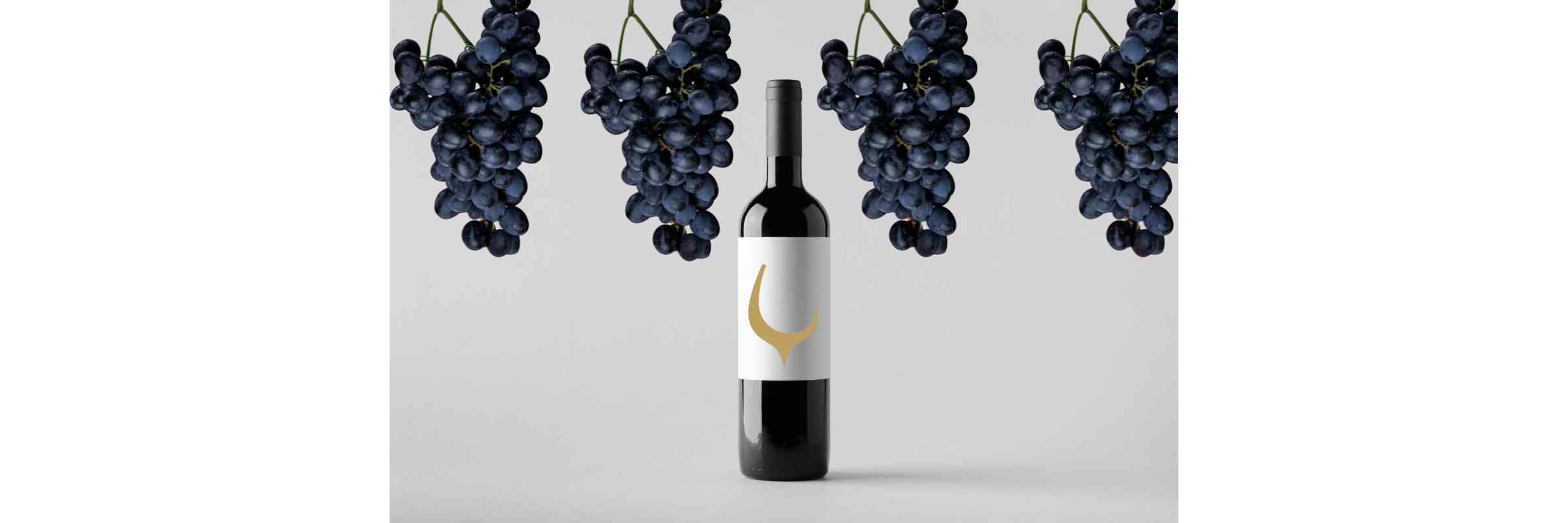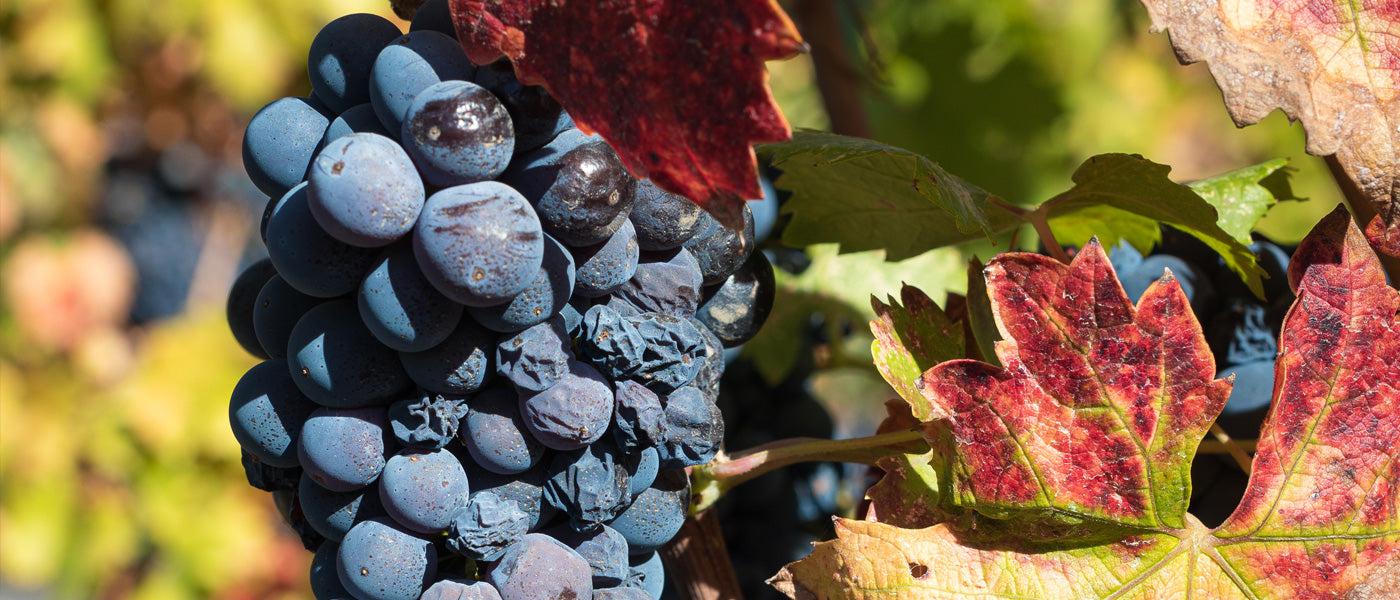On average there are 600 to 800 individual grapes or 10 grape clusters in each bottle of wine.
It doesn't matter whether its red, white or rose wine the average yield from grape juice (amount of wine produced) is approx. 70%.
This means that 100kg of grapes will make 70 litres of wine.
However once the fermentation process is complete the total amount of wine reduces again so only 25-35% is left to be bottled and sold.
Quick Wine Grape Facts:
- A 750 ml wine bottle holds about 2.5 to 2.8 pounds of grapes
- Four grape clusters are needed to make one bottle
- A grape cluster contains 75 grapes
- 1 grape cluster can fill one wine glass
- A single vine can produce 10 - 12 bottles of wine or a case of wine
- A single vine can contain anywhere from 35 to 60 clusters of grapes
- 1200 grape clusters are needed to produce one barrel
How Many Grapes to Fill a 750ml Bottle of Wine?

On average 600 to 800 individual grapes are needed to fill a 750m wine bottle and around 10 wine grape clusters.
This number is subject to change according to the following factors:
1. Grape Types
Grape type greatly influences the number of grapes needed to fill a wine bottle.
2. Local Weather
Weather conditions affect the grape.
For example, the grape is plumb if it grown in an area with heavy rain, while it is shriveled and dryer if it is grown it hot weather conditions.
3. Soil Conditions
Another factor is the soil type. The type of soil can greatly influence the characteristics of the fruit.
An example for that is the Cabernet Sauvignon. The Cabernet Sauvignon grows best in dry-nutrition-poor soils.
So, Cabernet is usually planted in Napa Valley which has a warm climate and that results in producing a higher yield if grown in rich soil like in Barossa Valley.
The problem with rich soil is that it can result in the plant growing too quickly at the start of the year and not getting the proper sunlight needed to ripen well.
4. Growing Technique
The pressing process used in the winemaking process can affect the number of grapes required for a single win bottle.
If we talk about the free-run method for example, this technique usually requires more grapes since some of the juice remains and gets left behind.
Another example is the Basket Press.
The basket press technique requires 10 to 15 percent less grapes than the Bladder press.
Is the Price of the Bottle Affected by the Number of Grapes?
Yes, the number of grapes in wine bottle does determine the price of the bottle besides other factors.
Wine Grape Production Quantities Affect the Bottle Price?
Vineyards that produce low grape quantities tend to produce wines with higher alcohol percentage and more flavor.
On the other hands, vineyards that produce large quantities tend to produce diluted wines.
That’s why the more expensive bottles are produces from low output vineyards.
Cost of Wine Grapes
To give you a clearer image, this is how much the California Wine Industry spent in 2020 on grapes.
- £684/$790 per ton of red grapes.
- £481/$555 per ton of white grapes
- £138/$160 per ton of table grapes.
- £216/$250 per ton of raisined grapes.

The Grape Planting and Harvesting Process
Planting
Grape vines are planted on suitable soil and covered with carton material to provide protection and the necessary warmth.
Pruning
This is used in winter to remove excessive vine shoots.
Flowering Phase
The first buds are seen in March and the green clusters start to show in May.
Veraison
In this phase, green grapes start to turn into plump clusters. Red grapes like the famous cabernet sauvignon turn purple. White grapes like the Sauvignon Blanc turn to a golden greenish color.
What Happens After The Grapes Are Harvested (Wine Making)?
Pressing
Clusters, skins, seeds, stems and seeds are pressed. The resulting juice of the pressed grapes is collected in an oak barrel/tank for the fermentation process.
Fermentating
Yeast converts the sugar into alcohol and carbon dioxide.
Aging in Barrels
The wine is left to age in oak barrels or stainless-steel tanks. A small amount of Sulfur is added to stabilize the wine.
Sampling & Bottling
First the wine is sampled to make sure the flavors are on point. The wine is then filtered to remove any sediment and to illuminate the wine. In the end, the wine is bottled and labeled.
Related Articles:
- How Much Does a Wine Bottle Weigh
- How Long Does Wine Last?
- Can I Store My White Wines with Red Wines?
Before you go...
We hope you enjoyed our article on the number of grapes in a bottle of wine.
If you have any questions, leave them in the comments, or email us at info@expertwinestorage.co.uk
Expert Wine Storage can help you find a luxury wine fridge to store your precious wine collection
Sources:
https://www.forbes.com/sites/lmowery/2021/09/23/california-winemaker-matt-iaconis-shares-the-joys-perils-and-hopes-of-harvest-season/?sh=5a3462422d72



 Author:
Author:
Leave a comment (all fields required)